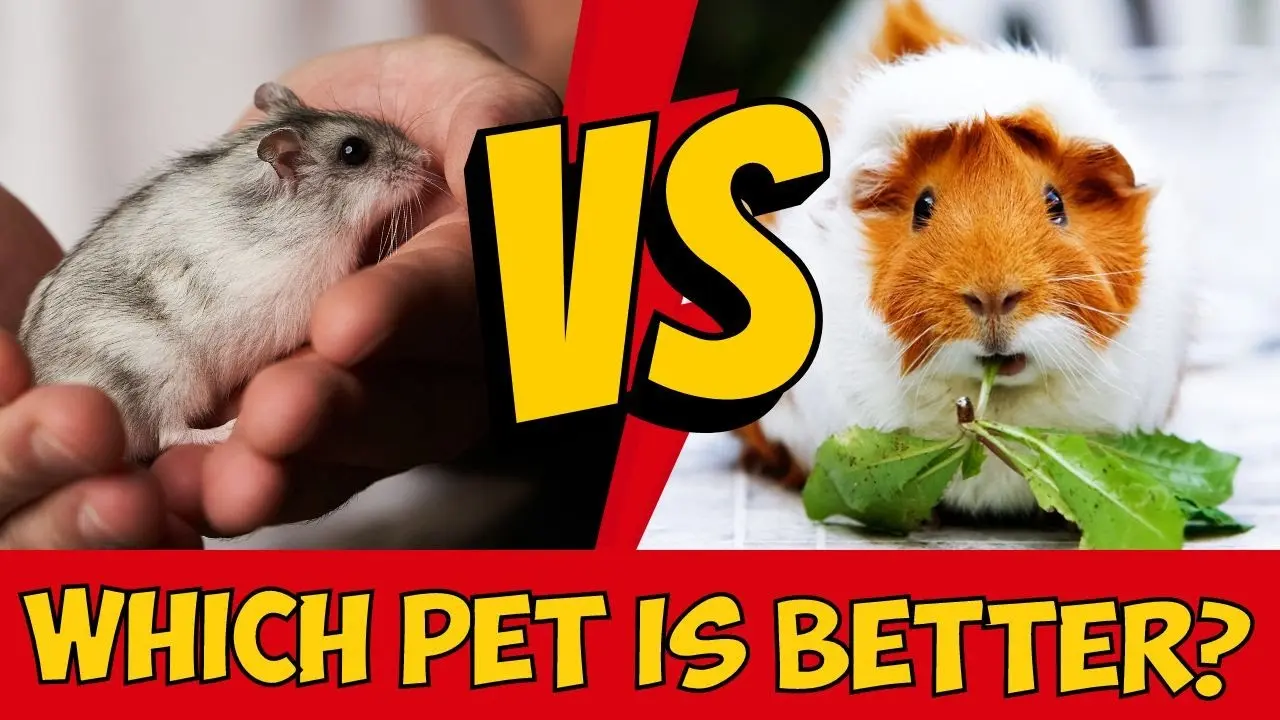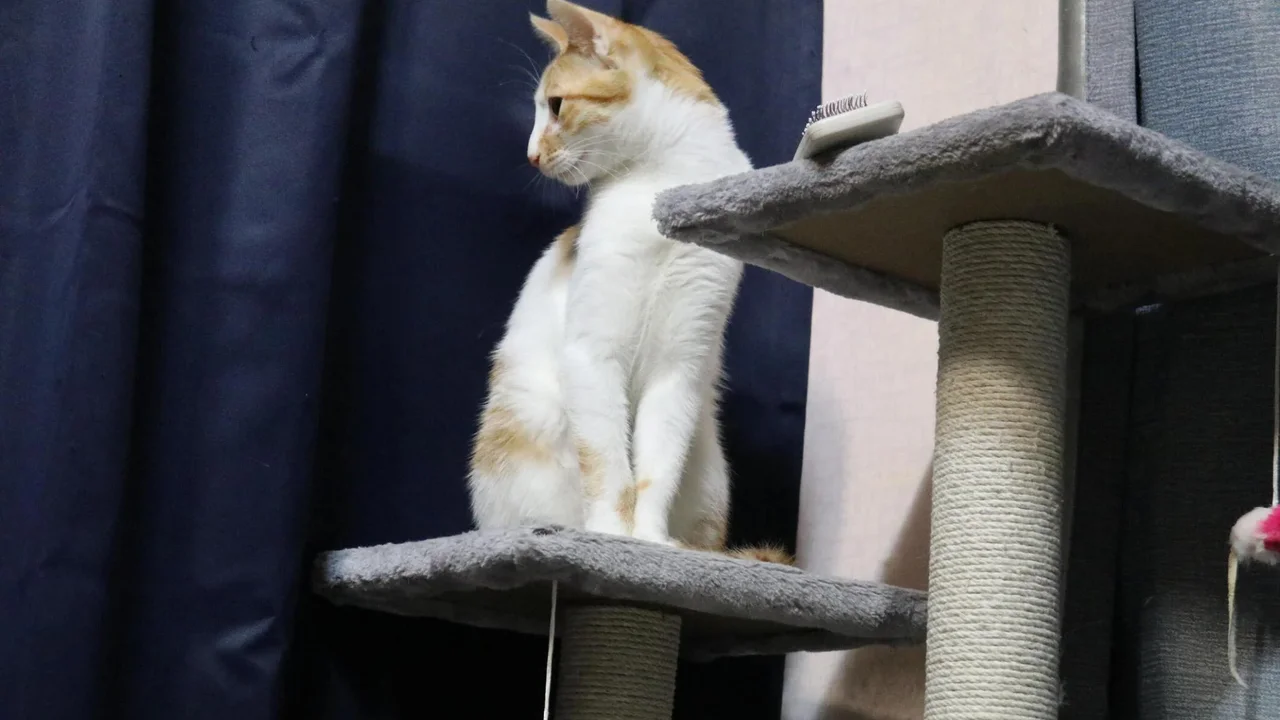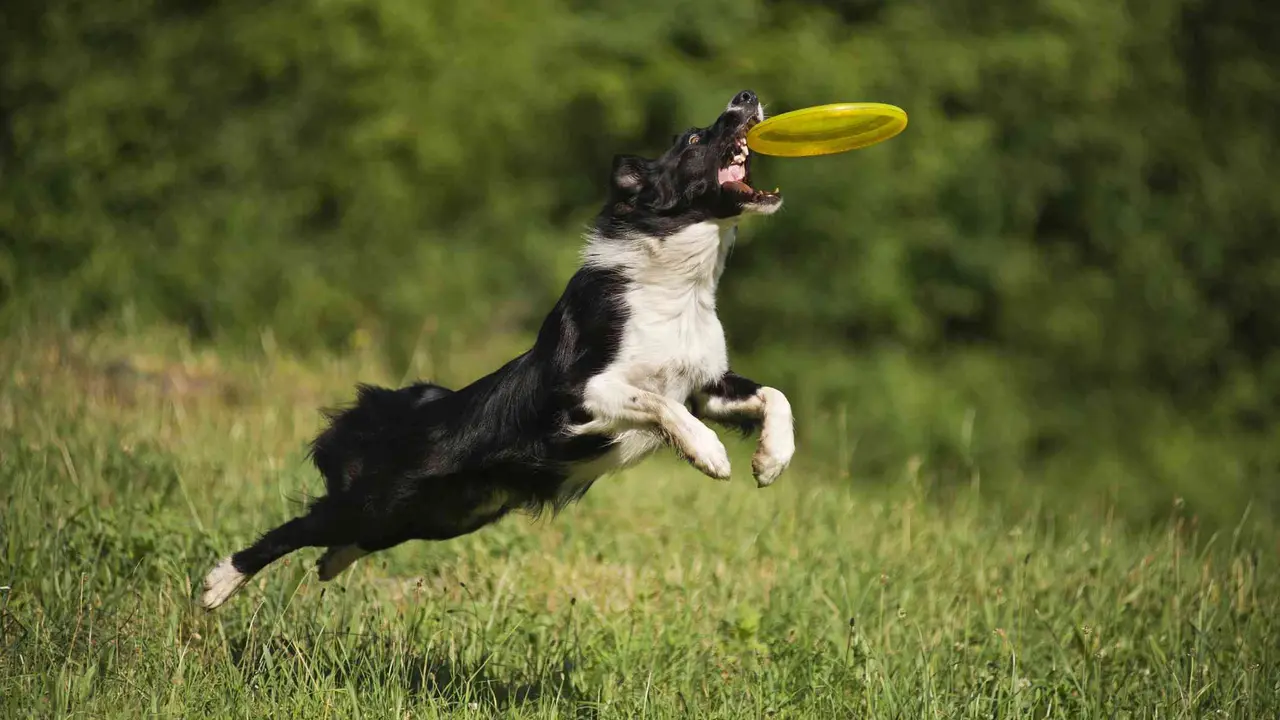Guinea Pig vs. Hamster: Which is the Better Pet?
Guinea pigs and hamsters are popular small pets, but which is right for you? This article compares their personalities and care needs. Learn about the differences between these two species.

Guinea Pig vs Hamster Overview Understanding the Basics
So, you're thinking about getting a small, furry friend, huh? Two of the most popular options are guinea pigs and hamsters. They're both relatively low-maintenance compared to, say, a dog or a cat, but they have distinct personalities and needs. Let's dive in and see which one might be the better fit for you.
Guinea pigs, also known as cavies, are social creatures that originated in the Andes. They're known for their adorable "wheeking" sounds and their need for companionship. Hamsters, on the other hand, are solitary animals that are active mostly at night. They're known for their cheek pouches and their love of running on wheels.
Guinea Pig Personality and Social Needs
Guinea pigs are social butterflies. They thrive on interaction and are happiest when kept in pairs or small groups. If you only get one guinea pig, you'll need to dedicate a good amount of time to interacting with it to keep it happy and stimulated. They love being petted, held (gently!), and even trained to do simple tricks.
Guinea pigs are also pretty vocal. They make a variety of sounds, including wheeks (excited squeals), purrs (contentment), and rumbles (dominance or courtship). Learning to understand their vocalizations is a great way to bond with your guinea pig and understand its needs.
Social Interaction: Guinea pigs need at least one other guinea pig to thrive. Consider adopting a bonded pair.
Vocalization: Learn to recognize their different sounds to understand their moods and needs.
Handling: Guinea pigs enjoy gentle handling and can be trained to tolerate being picked up and petted.
Hamster Personality and Activity Levels
Hamsters are the introverts of the small pet world. They prefer to live alone and can become territorial if housed with other hamsters. While they might not be as cuddly as guinea pigs, they're still fun to watch and interact with. They're most active at night, so you'll see them running on their wheels, burrowing in their bedding, and stuffing their cheek pouches with food.
Hamsters are also escape artists. They're curious and love to explore, so it's important to have a secure cage with a tight-fitting lid. They also need plenty of toys and enrichment to keep them from getting bored and stressed.
Solitary Nature: Hamsters prefer to live alone and can become aggressive if housed with other hamsters.
Nocturnal Behavior: Hamsters are most active at night, so be prepared for some late-night activity.
Escape Artists: Secure their cage and provide plenty of enrichment to prevent escapes.
Guinea Pig Care Needs Housing and Diet
Guinea pigs need a spacious cage with a solid bottom. Wire-bottom cages can hurt their feet. The cage should be at least 7.5 square feet for two guinea pigs. They also need plenty of bedding, such as fleece or paper-based bedding, to absorb urine and keep them comfortable. Spot clean the cage daily and do a full cleaning once a week.
Guinea pigs are herbivores and need a diet that's high in fiber and vitamin C. They should have access to fresh hay, such as Timothy hay, at all times. They also need a daily serving of guinea pig pellets, as well as fresh vegetables, such as leafy greens, bell peppers, and carrots. Guinea pigs cannot produce their own Vitamin C, so supplementation is necessary, either through pellets or treats.
Cage Size: At least 7.5 square feet for two guinea pigs.
Bedding: Fleece or paper-based bedding is recommended.
Diet: Timothy hay, guinea pig pellets, and fresh vegetables are essential.
Vitamin C: Supplement with Vitamin C, as guinea pigs cannot produce it themselves.
Hamster Care Needs Cage Size and Food
Hamsters can live in smaller cages than guinea pigs, but they still need plenty of space to run and play. A cage that's at least 450 square inches is recommended. They also need a solid-bottom cage with plenty of bedding, such as paper-based bedding or aspen shavings. Avoid cedar or pine shavings, as they can be harmful to hamsters.
Hamsters are omnivores and need a balanced diet of hamster pellets, seeds, and vegetables. They also enjoy occasional treats, such as fruits and nuts. It's important to provide them with a running wheel to keep them active and prevent obesity.
Cage Size: At least 450 square inches.
Bedding: Paper-based bedding or aspen shavings are recommended.
Diet: Hamster pellets, seeds, and vegetables are essential.
Exercise: Provide a running wheel to keep them active.
Guinea Pig Health Concerns and Veterinary Care
Guinea pigs are prone to certain health problems, such as respiratory infections, skin problems, and dental issues. It's important to find a veterinarian who specializes in small animals and to take your guinea pig in for regular checkups. Signs of illness in guinea pigs include loss of appetite, lethargy, sneezing, and difficulty breathing.
One common issue is bumblefoot, an infection in the feet caused by unsanitary conditions or wire-bottom cages. Vitamin C deficiency can also lead to health problems. Regular nail trims are necessary to prevent overgrowth and injury.
Common Issues: Respiratory infections, skin problems, and dental issues.
Veterinary Care: Find a vet specializing in small animals for checkups.
Bumblefoot: Prevent this with proper cage hygiene and solid-bottom cages.
Nail Trims: Regular trims are necessary to prevent overgrowth.Hamster Health Concerns and Prevention
Hamsters are also prone to certain health problems, such as wet tail (a bacterial infection), tumors, and dental issues. It's important to keep their cage clean and to provide them with a healthy diet to prevent these problems. Signs of illness in hamsters include diarrhea, lethargy, loss of appetite, and a hunched posture.
Hamsters are also susceptible to mites and other parasites. Regularly check their fur for signs of infestation. Dental problems can be minimized by providing appropriate chewing toys.
Common Issues: Wet tail, tumors, and dental issues.
Prevention: Keep their cage clean and provide a healthy diet.
Parasites: Regularly check their fur for mites and other parasites.
Chewing Toys: Provide appropriate toys to minimize dental problems.
Guinea Pig Cost of Ownership Initial and Ongoing Expenses
The cost of owning a guinea pig includes the initial cost of the guinea pig itself, as well as the cost of a cage, bedding, food, and veterinary care. Guinea pigs typically cost between $20 and $50 each. A good-quality cage can cost between $50 and $100. Bedding and food will cost around $20 to $30 per month. Veterinary care can cost several hundred dollars per year, depending on the guinea pig's health.
Remember, you'll likely need to purchase two guinea pigs, doubling the initial cost. Ongoing costs include fresh produce and hay, which can add up over time. Consider the long-term financial commitment before adopting.
Initial Cost: $20-$50 per guinea pig (remember you need two).
Cage Cost: $50-$100 for a good-quality cage.
Monthly Expenses: $20-$30 for bedding and food.
Veterinary Care: Can be several hundred dollars per year.
Hamster Cost of Ownership Budgeting for Your Pet
The cost of owning a hamster is generally lower than the cost of owning a guinea pig. Hamsters typically cost between $10 and $30 each. A good-quality cage can cost between $30 and $70. Bedding and food will cost around $15 to $25 per month. Veterinary care is generally less expensive for hamsters than for guinea pigs.
While the initial cost is lower, remember to factor in the cost of enrichment items like wheels, tunnels, and chew toys. These are essential for their mental and physical well-being. Unexpected vet bills can still arise, so it's wise to have a small emergency fund.
Initial Cost: $10-$30 per hamster.
Cage Cost: $30-$70 for a good-quality cage.
Monthly Expenses: $15-$25 for bedding and food.
Enrichment: Factor in the cost of wheels, tunnels, and chew toys.
Guinea Pig Recommended Products and Accessories
Here are a few recommended products and accessories for guinea pigs:
- Midwest Guinea Pig Habitat: A spacious and easy-to-clean cage. Costs around $80.
- Kaytee Timothy Hay: High-quality hay that's essential for their diet. A 48-ounce bag costs around $15.
- Oxbow Essentials Guinea Pig Food: A balanced pellet food that's fortified with vitamin C. A 5-pound bag costs around $20.
- Living World Teach N Treat Small Animal Toy: Provides mental stimulation. Costs around $12.
These products are available at most pet stores and online retailers. Consider purchasing bundles for better value. The Midwest Guinea Pig Habitat is especially popular for its customizable size and easy assembly.
Hamster Recommended Products and Accessories
Here are a few recommended products and accessories for hamsters:
- Amazon Basics Hamster Cage: A good-sized cage with plenty of ventilation. Costs around $40.
- Vitakraft Vita Nature Hamster Food: A balanced food mix with seeds and vegetables. A 2-pound bag costs around $10.
- Silent Spinner Wheel: A quiet running wheel that won't disturb your sleep. Costs around $15.
- Niteangel Hamster Chew Toy: Keeps their teeth healthy. Costs around $8.
These products are readily available and relatively affordable. The Silent Spinner Wheel is a must-have for nocturnal hamsters. Ensure the cage has secure latches to prevent escapes.
Guinea Pig vs Hamster Suitability for Children
Guinea pigs can be good pets for older children who are gentle and responsible. They need to be handled carefully and supervised when interacting with children. Hamsters are generally not recommended for young children, as they're nocturnal and can be easily startled. They also have a tendency to bite if they feel threatened.
Both animals require supervision when interacting with children. Teach children how to handle them gently and respectfully. Never allow children to squeeze or drop them.
Guinea Pig vs Hamster Noise Levels and Odor Control
Guinea pigs are relatively noisy pets, especially when they're hungry or excited. They make a variety of squeaking and wheeking sounds. Hamsters are generally quieter, but they can make noise when they're running on their wheels or burrowing in their bedding. Both animals can produce odors if their cages are not cleaned regularly. Guinea pigs, due to their larger size and higher urine output, tend to produce more odor than hamsters.
Regular cleaning is key to controlling odor. Use high-quality bedding and spot-clean daily. Consider air purifiers to further minimize odors.
Guinea Pig vs Hamster Lifespan and Commitment
Guinea pigs have a lifespan of 5 to 7 years, while hamsters have a lifespan of 2 to 3 years. This means that owning a guinea pig is a longer-term commitment than owning a hamster. Consider your lifestyle and ability to care for the pet for its entire lifespan before making a decision.
Be prepared for the emotional commitment as well. Saying goodbye to a pet is never easy, but it's a part of pet ownership.
Guinea Pig vs Hamster Final Thoughts
Choosing between a guinea pig and a hamster depends on your lifestyle, preferences, and ability to provide the necessary care. Guinea pigs are social and cuddly, but they require more space and attention. Hamsters are independent and low-maintenance, but they're not as interactive. Weigh the pros and cons of each animal carefully before making a decision.
:max_bytes(150000):strip_icc()/277019-baked-pork-chops-with-cream-of-mushroom-soup-DDMFS-beauty-4x3-BG-7505-5762b731cf30447d9cbbbbbf387beafa.jpg)






